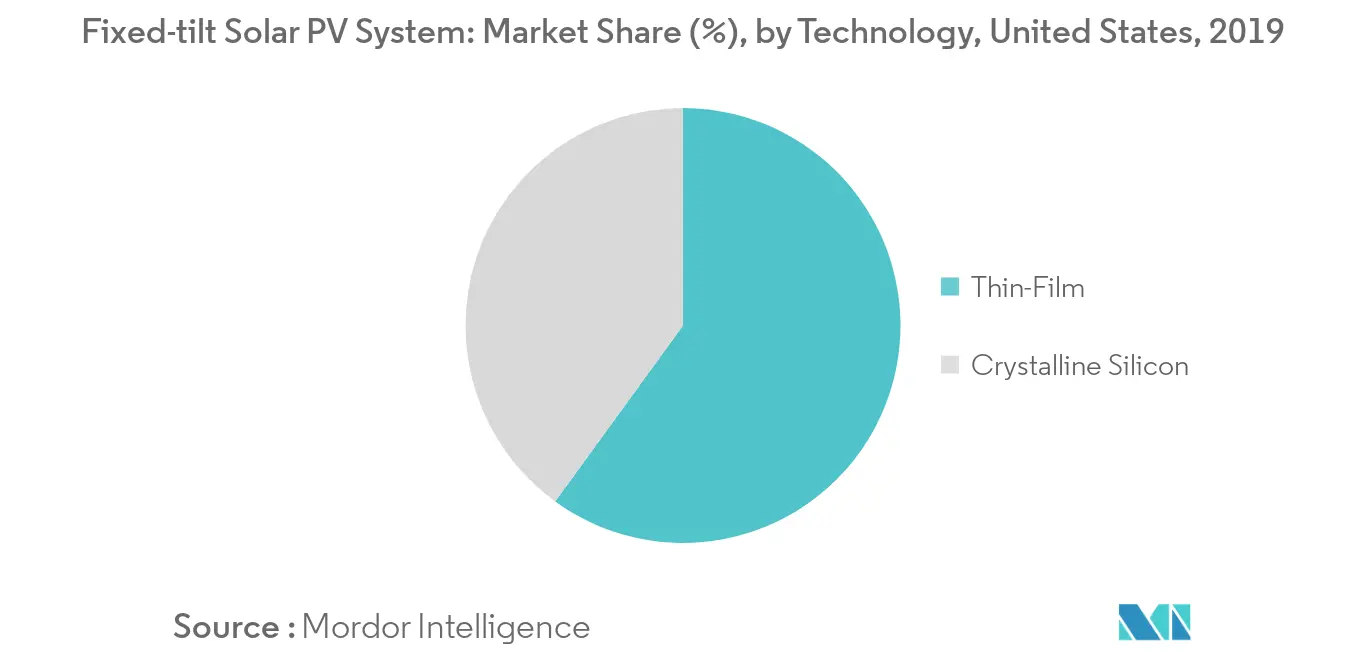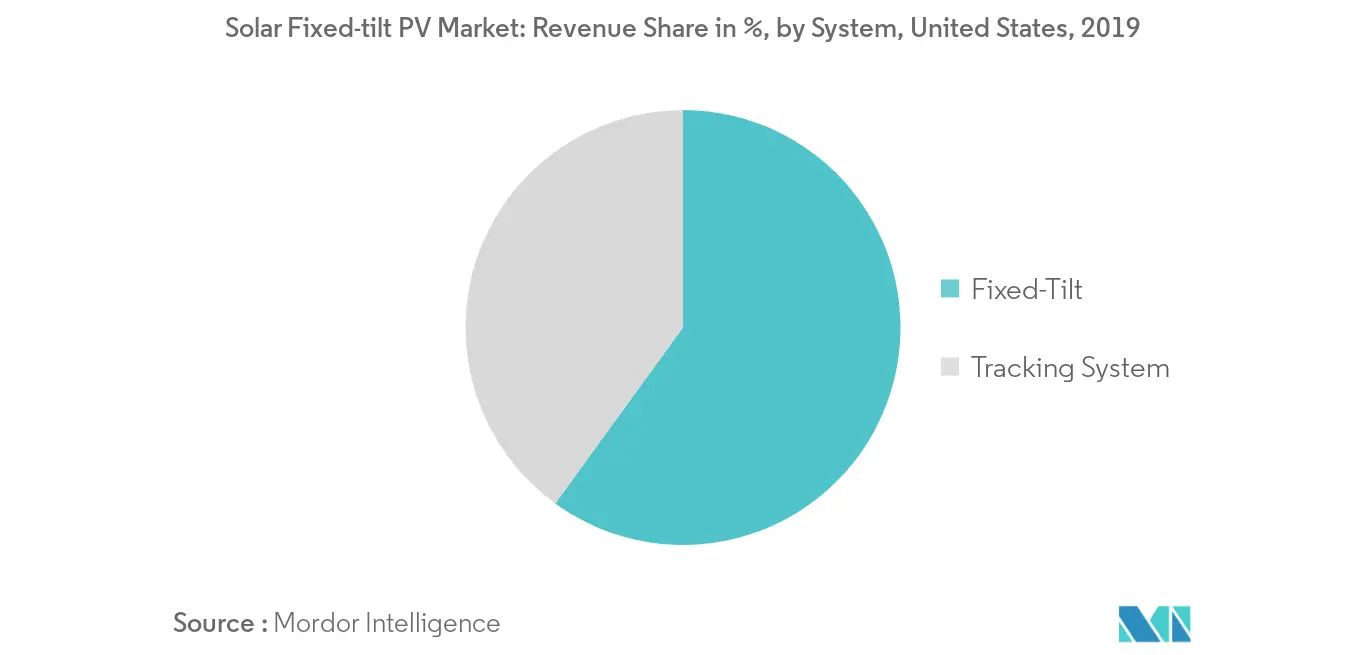Market Trends of United States Fixed-tilt Solar PV Industry
This section covers the major market trends shaping the US Fixed Tilt Solar PV Market according to our research experts:
Thin Film Segment to Dominate the Market
- Thin-film photovoltaic module is the breakthrough in solar technology and is rapidly increasing its share in the solar power sector.
- Thin-film (TF) solar panels consist of solar cells with light-absorbing layers, which are more than 350 times smaller than a standard silicon panel. They are considered to be the lightest PV cell, owing to their narrow design and efficient semiconductor built into the cells. Thin-film solar cells are less expensive to produce than traditional silicon solar cells, as they require a lesser amount of materials for construction.
- Thin-film solar cells include - amorphous silicon (a-Si), cadmium telluride (CdTe), and gallium selenide (CIGS) cells. Among the other types, CdTe is the most widely used, roughly accounting for 50% of the share for thin-film solar panels. The record lab cell efficiency is 19.2% for CIGS, 19.9% for CdTe, and 11% for a-Si modules.
- Thin-film PV modules are commercially significant in utility-scale photovoltaic power stations, building integrated photovoltaic or in the small standalone power system.
- Hence, thin-firm is expected to dominate the market studied during the forecast period.

Increasing Adoption of Tracking System
- In recent years, solar power plants have been increasingly installed with tracking systems instead of fixed-tilt systems. Tracking systems either rotate on a single axis or on a dual-axis. Although tracking systems are more expensive than fixed-tilt systems, they are preferred over fixed-tilt systems as the tracking mechanism is designed to track the sun automatically. It generally tracks east to west, and many existing single-axis tracking systems have a tilt of zero degrees.
- In 2018, in the United States, the power production cost for fixed-tilt utility-scale systems was USD 1.44 per Watt, which amounts to USD 1.47 per Watt for tracking systems solar PV. In spite of higher costs, the revenues from the surplus power generated exceed the additional cost for tracking systems over fixed-tilt system over the period. Hence, the adoption of tracking based solar PV systems had been increasing over the last few years as compared to fixed-tilt systems.
- The share in new installations of solar PV tracking systems has reached 79% of total new installations, in 2018, compared to that of 44%, in 2014. Over the years, tracking systems has been replacing fixed-tilt systems in new installations.
- Hence, this is expected to restrain the market of fixed-tilt solar PV system during the forecast period.

